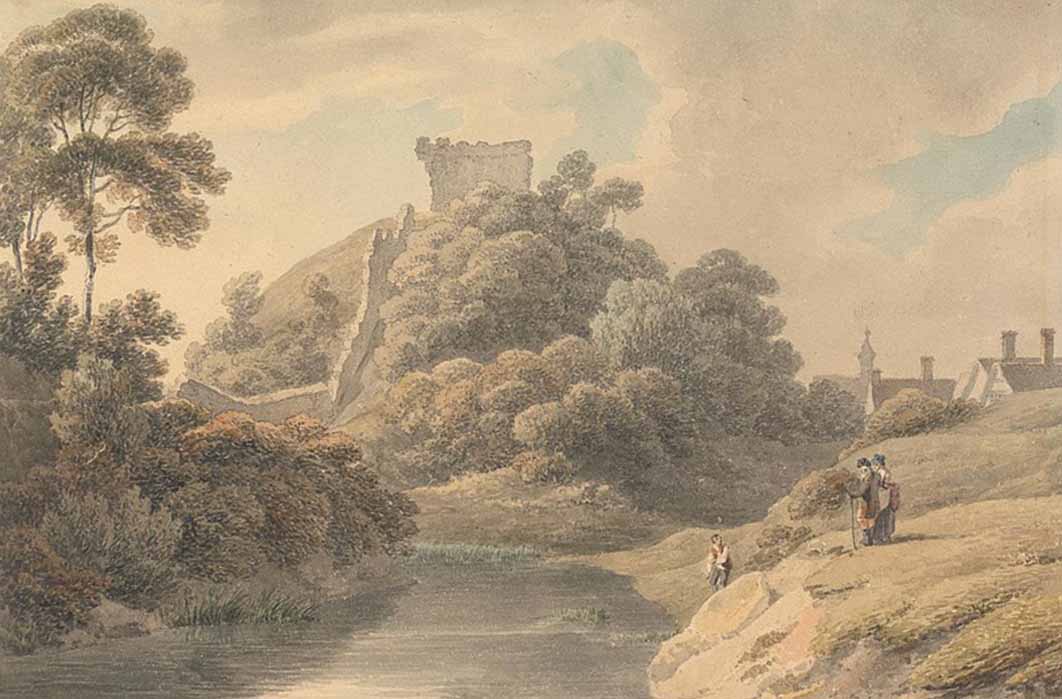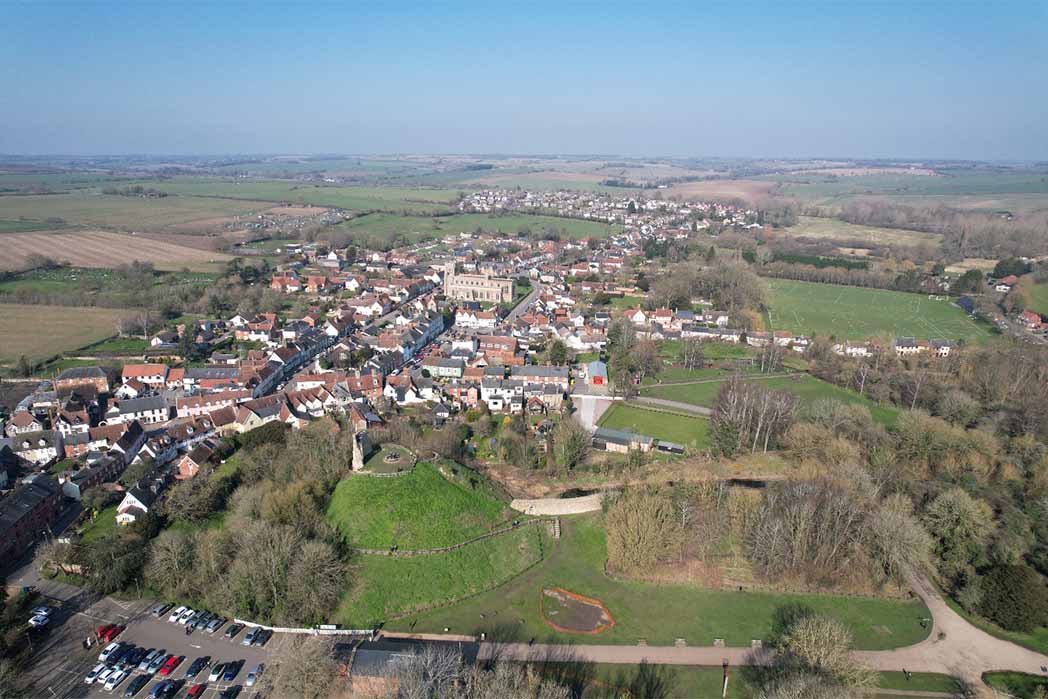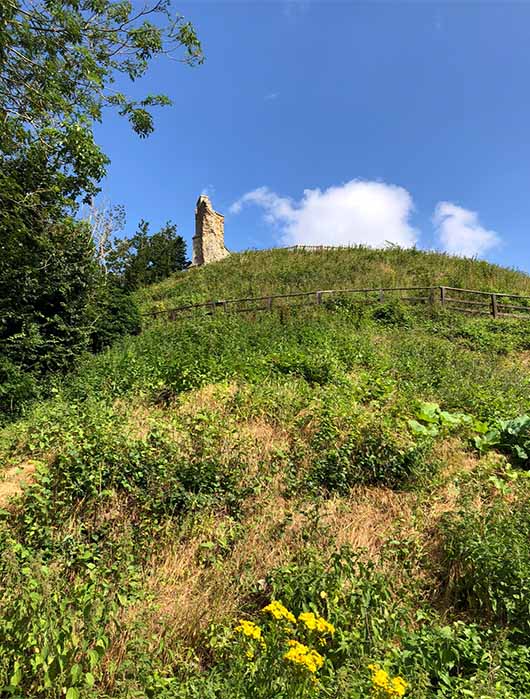
Clare Castle, Seat Of Elizabeth De Clare Who Defied Her King
Not all castles are occupied by fairy princesses. In the 14th century, Elizabeth de Clare was one of the wealthiest and most powerful women of her time, who defied her king to defend her lands. Today in Suffolk, the ruins of Clare Castle, located within a country park which was once part of the Castle grounds, perch on top of a steep 30-meters (98-feet) high motte. The site is popular amongst tourists and has long attracted historians hoping to uncover the Castle's hidden history, but it is only over the past 20 years that archaeological excavation has intensified and little by little, the soil has been giving up its secrets.

Aerial view of Clare Castle perched on top of the motte and surrounding park. (steve /Adobe Stock)
Early History of Clare Castle
There is early historical reference to a settlement at Clare dating to the Anglo-Saxon period when it is recorded that the manor and estate were held by Earl Aluric, also called Aelfric, a thane of Suffolk. Although the records do not specify the form this estate took, they do inform that Aelfric gifted grounds within the Castle boundary to the monastery of St John the Baptist. Aside from the Anglo-Saxon manor the area also had a mill, a market and vineyards.
In 1066 the Normans conquered the Anglo-Saxons and William the Conqueror confiscated Aelfric’s estates. By 1086 the lands at Clare were given by William the Conqueror to Richard Fitz Gilbert, one of his loyal supporters and son of the Count of Brione. Richard took the surname De Clare and made his lands at Clare the capital of all his vast feudal barony estates. Richard immediately commenced construction of the motte-and-bailey castle, and it was habitable by 1090.

Looking up the steep motte at the ruins of the Castle (Image: Courtesy Rebecca Batley)
A motte-and-bailey castle was a fortification with a wooden or stone keep situated on a raised area of ground called a motte, accompanied by a walled courtyard, or bailey, surrounded by a protective ditch and palisade. The Castle was very large, probably built initially of wood and was originally surrounded by one bailey although later there would have been two. Both were surrounded by deep ditches and a palisade. The motte part of the Castle was built 30 meters (98 feet) high and measuring 250 meters (820 feet) across making it a highly visible symbol of Norman authority within the landscape. Aside from the monastic buildings which were inside the Castle another church, St Paul’s, was also built whose tithes were given to the Abbey of Bec. The Castle was surrounded by hunting parks, filled with deer which were already well-established by 1090 and visited by kings and royalty.
The Powerful De Clare’s
The De Clare family grew to be one of the most influential and powerful during the medieval period. As their landholdings and prestige grew so did the importance of Clare Castle. In 1124, in keeping with common practice whereby noblemen endowed religious houses, Richard de Clare moved the Benedictine monks to Stoke-by-Clare, about four kilometers away. A surviving sketch suggests that it was at about this time that the second bailey was added. Later in 1248 an Augustinian Friary was founded next to the Castle by Richard de Clare, the sixth Earl of Gloucester. Richard played a key role in the baronial crisis caused by Simon de Montfort's rebellion and continued to do so until his death in 1262.
- Pembroke Castle Revealing A Secret Of Henry VII’s Birthplace
- The Exploits Of Margaret Of Beverley, Caught In The Crusades
- Strongbow’s Gamble: Richard de Clare and the Norman Invasion of Ireland
By the 13th century the keep of the Castle had been rebuilt in stone and the establishment there was of such a size that it was required to be administered from Clare Camp by a bailiff who kept detailed records of the huge number of servants, workshops, stables and other buildings that worked and existed within the Castle. He also kept a close eye on the Castle guard system which saw local knights and soldiers being used to defend the Castle. The town of Clare also prospered near the Castle, despite limited involvement in it by the De Clare lords.




